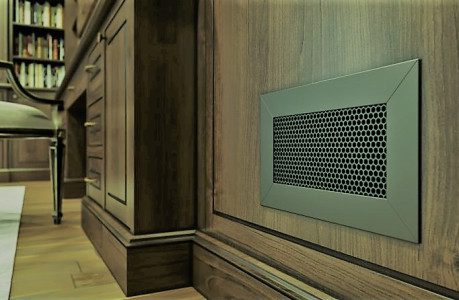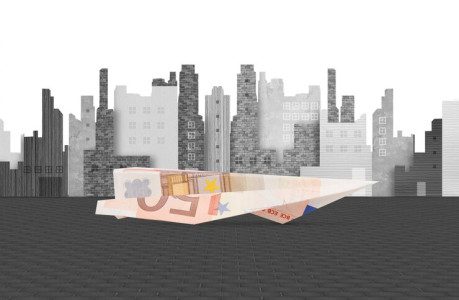How To Flip CRE Properties For Profit: Tips On Selection And Valuation

Learning how to flip commercial real estate is one of the best ways to reap the benefits of the US CRE market. According to Revolution Realty Capital, the average annual return on CRE was 9.5% between 2014 and 2023, which was better than the industry average of 7.8%. So, here’s how to flip CRE properties.
Succeeding at CRE flipping depends on the investor’s ability to select the right properties and buy those properties at the right price. Investors who have mastered these two key aspects are on the way to profiting from the market.
In this article, we will highlight how you can do both.
What Is The Function Of Flipping Houses?
In the world of real estate investment, flipping is a strategy. Here, the investor buys a property with the aim of selling it- but here’s a catch. Rather than utilizing it for his own purpose, he tries to make a profit out of it. Moreover, investors flipping properties mostly focus on the purchase process and resulting resale of properties.
On the other hand, investors try to generate a standard income flow by investing in frequent flips. The key to flipping a house is to purchase low but sell at a higher price. It is critical to end the transaction process immediately rather than opting for the buy-and-hold technique.
However, the flipping process also comes with its own set of challenges. Price appreciation drives the rate of profits resulting from a booming real estate market. For instance, an investor may buy a house in the neighborhood, make renovations, and then sell it at a higher price. The latter might reflect the new appearance of the house.
Selecting The Right Properties For Flipping
The key to succeeding at CRE flipping is to select Class B properties.
While Class A properties are high-end properties in desired locations and Class C properties are low-quality properties in less desirable locations, Class B properties are somehow in between.
They are also in desired markets, but they do not yet have the quality and value of Class A properties. This is an advantage for flippers. By enhancing the value of these properties through value-oriented repairs and improvements, flippers can make impressive returns.
Consequently, as a house flipper, you should focus on identifying and selecting Class B properties, preferably in markets you are well familiar with. You can also choose to work with a real estate agent more familiar with the market to identify such properties.
Buying The Right Properties At The Right Price
Selecting the right property is just the beginning when you flip CRE properties. Your returns on a good property might be low if you buy it at too high a price. Therefore, you must seek to rightly value properties and purchase them at a good price.
There are two valuation methods common to CRE flippers:
The 70% rule
According to this rule, your purchase price should be less than 70% of the after-repair value (ARV) of the property minus the rehab costs.
The ARV is how much you expect to sell the property after making all repairs and improvements. You can get this value by looking at comparable properties (that are already in the shape that the property will be in after repairs and improvements) that are currently in the market. The mean value of these comparable properties is a good estimation.
Rehab costs represent the total costs of all repairs and improvements.
Suppose a property will be worth $3,000,000 after repairs and the total rehab costs to bring it to that value is $500,000. Then, according to the 70% rule, you should not buy it for more than $1,600,000 ([70%*$3,000,000] – $500,000).
Maximum allowable offer
According to this valuation method, the maximum offer you should make for a property is the ARV – fixed costs – rehab costs – desired profit or margin (as a % of ARV).
The main difference with the 70% rule is the role of fixed costs. These include agent fees, holding costs, title fees, taxes, insurance, and other fixed costs you will incur for holding the property during the period of rehabilitation and selling it thereafter.
Desired profit or equity is how much profit you intend to make on the property as a % of the ARV.
Let’s continue with the above illustration. Suppose fixed costs add up to $100,000 and that you desire a 9.5% profit. Your maximum offer should be $2,115,000 ($3,000,000 – $100,000 – $500,000 – [9.5%*$3,000,000]).
Note that the maximum offer increases or decreases with your desired profit. The more profit you desire, the less you will offer, and vice versa.
Winning At Flip CRE Properties
Any of these two methods should give you a good insight into what you should pay for properties of choice. If you are not sure which to select, you can find an average of the results of the two valuation methods (that will be $1,857,500).
One more tip for winning at CRE flipping: get your earnest money in order. In today’s CRE market, you need to pay earnest money before you can inspect or negotiate for a property.
If you don’t have the cash to deposit as earnest money, a company like Duckfund can provide earnest money financing to aid all sorts of real estate investors. With their solution, you will be able to access funding for multiple deals at a fee of just 2% per month.
Furthermore, you can complete your application in less than 2 minutes and get the needed funds in 24 hours without any credit check.
Concluding Words
A lot of factors contribute to the declining value of any residential property. From outdated fixtures to damaged properties, everything might have a negative impact. But these should not limit the valuation of your home at a befitting price.
Save this article for the next time you cannot comprehend the true value of a property. Also, don’t forget to comment below and communicate your thoughts into this!
Read Also:


























Leave A Reply